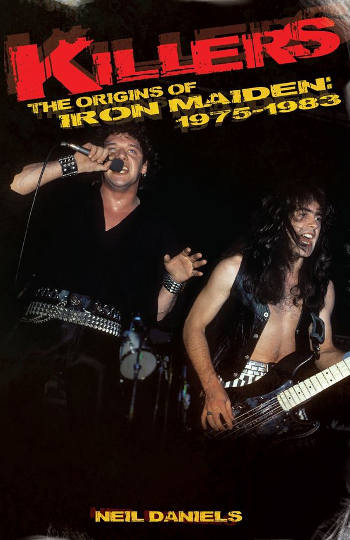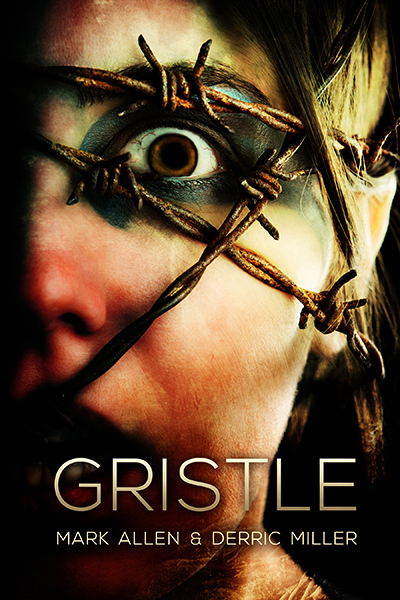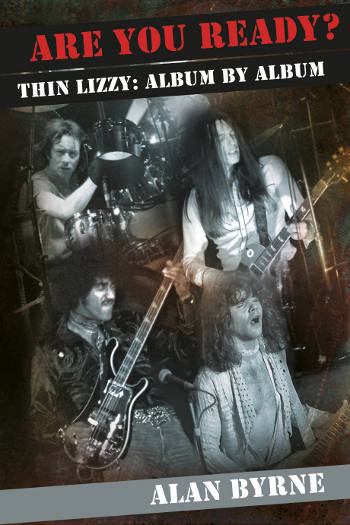
by Alexandra Mrozowska
– Senior Columnist —
 You don’t really have to be a staunch Maiden follower with Eddie the Head’s lovely face smiling from every t-shirt in your closet to know what this book is all about. One quick look at the front and back cover should be enough to get it. With Paul Di’Anno on the front and Bruce Dickinson on the back, both photographed next to Maiden’s sole founder and mastermind Steve Harris, you get a picture of two faces of the same band – both strikingly different, both of equally legendary status, none of the two more important than the other one. This fascinating duality of early Maiden – at the point of transition from the rough beginnings with Di’Anno to their metal prime with Dickinson – was what inspired the UK-based rock writer Neil Daniels to pen Killers: The Origins of Iron Maiden. Being the second book on Maiden written by Daniels and released via Soundcheck Books, it focuses on the first eight years in Iron Maiden’s history. The story is nothing perfunctory, however, as there are many flashbacks and flashforwards within it, too.
You don’t really have to be a staunch Maiden follower with Eddie the Head’s lovely face smiling from every t-shirt in your closet to know what this book is all about. One quick look at the front and back cover should be enough to get it. With Paul Di’Anno on the front and Bruce Dickinson on the back, both photographed next to Maiden’s sole founder and mastermind Steve Harris, you get a picture of two faces of the same band – both strikingly different, both of equally legendary status, none of the two more important than the other one. This fascinating duality of early Maiden – at the point of transition from the rough beginnings with Di’Anno to their metal prime with Dickinson – was what inspired the UK-based rock writer Neil Daniels to pen Killers: The Origins of Iron Maiden. Being the second book on Maiden written by Daniels and released via Soundcheck Books, it focuses on the first eight years in Iron Maiden’s history. The story is nothing perfunctory, however, as there are many flashbacks and flashforwards within it, too.
While it could have been more glorious, perhaps, to tell the tale of an immediate success on a worldwide level that came with Bruce Dickinson’s joining Iron Maiden, Neil Daniels chooses otherwise, following the earliest traces of Maiden’s birth and development into the band we know today. The author literally follows them from the sordid clubs to the sold-out stadia and concert arenas, the path they trod during their early years – with an emphasis on creativeness and hard work that was Maiden’s rocket to stardom. The approach to the book and the subsequent division of chapters are very balanced altogether – eight years, four full length albums, with both eras in the band’s early history covered in detail.
Alongside the two parts (the “origins” and “ascent” of the band, respectively), the foreword and afterword as well as the author-penned postscript is provided. The latter, written by Tim “Ripper” Owens (ex-Judas Priest, Yngwie Malmsteen’s Rising Force, DIO Disciples etc.) is a story of how influential Iron Maiden was towards him, complete with a balanced opinion on Maiden versus Priest ever-going debate. Fascinating is the former – penned by Guns N’Roses guitarist Ron ‘Bumblefoot’ Thal – which in a way encourages every metalhead to return to their most treasured memories of how they discovered metal as kids… not necessarily Maiden, but whatever band that’s made them interested in the genre.
As usual with Daniels’ works, it’s the detailed and analytical nature of the book that stands for its biggest asset. Apart from the music reviews, tour-related stories and band’s chronicles enriched with some retrospectives as well as flashforwards, Killers: The Origins of Iron Maiden is also vivid and in-depth portrayal of both frontmen of Iron Maiden – Paul Di’Anno and Bruce Dickinson, respectively. Simultaneously, it also portrays the band’s driving force, the bassist Steve Harris, who “is” Iron Maiden from the start and remains so up to date. The author examines difficult relationships between band members that led to countless line-up changes, drawing much from the musicians’ own comments that quoted in the book. Some of the musicians who played in the early Maiden incarnations share their thoughts on the book’s pages, too, adding much to its genuineness.
It’s also the “bigger picture” that is portrayed in Killers: The Origins of Iron Maiden, not as much in the background but alongside the regular story. The story of Iron Maiden is the story of NWOBHM in many respects, as well is parallel to the story of any other rock band that started out in the late ‘70s and continued ever since. There are many brilliant comments on relationship between music and politics, or music and society (infamous cases of Satanism accusations) as well as relationship between NWOBHM and other subgenres of metal (its influence over thrash, for example). Also by description of Di’Anno’s bittersweet post-Maiden musical career – and his ambivalent attitude towards performing Maiden songs live – the author poses an important question about the validity, or genuineness, of such drop-out acts.
Another aspect of the book to be praised is the vast amount of content, heavily contrasted with only a few band-related photos – let’s hope it remains a standard for every book on a rock/metal band, leaving the glossy photobooks to the cute-faced boybands. And yes, the story of Eddie the Head’s birth is always hilarious, even if you’ve read it for the thousandth of times – so is the vignette on the young Dickinson urinating into his headmaster’s dinner.
As mentioned before, the postscript is provided; it starts with some musings on how Maiden could have possibly contributed to the fall of the Iron Curtain in mid- and Eastern Europe (which is not as much out-of-this-world speculation as you might have thought it is, since they were the first heavy metal act to play in the Eastern Block in 1984). It further encompasses a summary of Maiden’s history up from that point to date, turbulent as always, but nevertheless fascinating. There are further departures and comebacks, successes and feuds (with Sharon Osbourne back in 2005, for example). There’s also Derek Riggs putting his pencil away, giving way to other artists who try their hand at re-inventing the figure of Eddie, or the fan club’s heart and soul Keith Wilfort stepping down. But it’s not all hitting the nostalgic note at the end of the book, as it finishes with a reflection on Iron Maiden’s heavy metal legacy that continues.
The appendices are Iron Maiden’s detailed discography from 1979 to 1983, including live and studio albums, box sets, singles, VHS/DVD releases and music videos, the summary of their tours from Di’Anno and early Dickinson era, the line-up history (useful in case you were lost among the vast number of personal shifts which perhaps only the author and Steve Harris themselves were able to keep up with). There’s also, as usually in Neil Daniels’ books, a section devoted to “metal heads talking Maiden”, in which rock scribes share their personal thoughts on the band and their music.
Killers: The Origins of Iron Maiden is another fine piece in Neil Daniels’ catalog, a solid biography of one of the most acclaimed metal acts. It attempts to explain why Iron Maiden became giants they are today, with analysis of all the factors that contributed to it – both artistic and business aspects. And, as it usually goes with chronicles of the early years of any band, it’s also a story of hard work and scrabble, concerts burdened with food-poisoned musicians struggling to perform and dreadful conditions of the band’s early tours. Moreover, it’s also the history of Eddie the Head, perhaps the most recognizable and iconic band mascot ever – so if you’d rather not fall into disfavor with him, I recommend you the book’s careful reading so as to make the ol’ Ed proud.
ISBN: 9780957570023
Publisher: Soundcheck Books
Website:
http://www.soundcheckbooks.co.uk/
http://www.neildanielsbooks.com/



